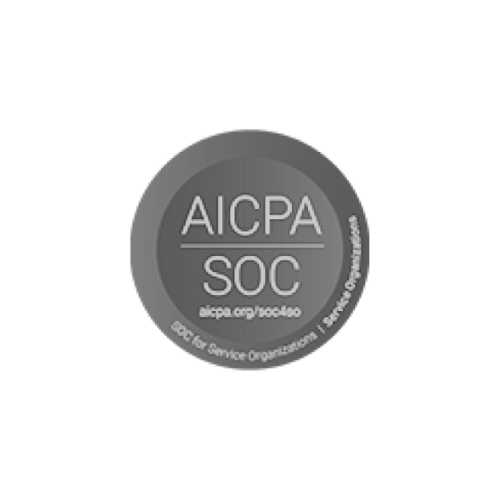Post-employment verification is an essential process that enables employers to verify the accuracy of their employees’ work history, credentials, and other important information. However, not all verification checks produce favorable results. When discrepancies arise, employers must know how to appropriately manage post-employment verification results to maintain a compliant and efficient workplace.
This article provides guidance on how to do just that.
Understanding Post-Employment Verification
Verification checks are typically conducted after a candidate has been offered a job and accepted the offer. These checks aim to confirm the accuracy of a candidate’s resume, work history, and other credentials. Post-employment verification is a process that employers use to ensure that their employees continue to meet the qualifications and standards required of their position.
The Importance of Post-Employment Verification
Post-employment verification is critical to the integrity of your organization. This process helps you confirm that your employees have the appropriate educational and work experience needed to perform their jobs, which enhances the quality of work product they produce. Additionally, post-employment verification helps to maintain a safe and secure workplace by ensuring that your employees have not engaged in any risky or illegal behaviors.
Post-employment verification also helps to build trust between employers and their employees. By verifying that your employees are qualified and trustworthy, you demonstrate that you value their contributions to your organization and that you are committed to their success.
Types of Post-Employment Verification Checks
The types of post-employment verification checks you conduct will depend on your organization’s needs, but common verification checks include:
- Criminal background checks: These checks can help you identify any criminal convictions or charges that your employees may have. Depending on the nature of your business, certain criminal convictions may disqualify an employee from working in certain positions.
- Reference checks: Reference checks allow you to verify the accuracy of your employees’ work history and educational credentials. They can also provide insight into your employees’ work habits, interpersonal skills, and overall character.
- Credit checks: Credit checks are often used for positions that involve handling financial transactions or sensitive information. These checks can help you identify any financial issues that your employees may have, such as a history of bankruptcy or outstanding debt.
- Drug tests: Drug tests are commonly used in industries such as transportation, healthcare, and law enforcement, where safety is a top priority. These tests can help you identify any employees who may be using drugs that could impair their ability to perform their job safely and effectively.
Legal and Compliance Considerations
Employers must perform post-employment verification in compliance with federal, state, and local regulations, and in adherence to industry standards. These regulations prohibit employers from conducting certain types of background checks and require employers to disclose the reason for conducting specific background checks.
It is important to work with legal counsel to ensure that your post-employment verification policies and procedures are in compliance with all applicable laws and regulations. Failure to do so could result in legal liability for your organization.
Overall, post-employment verification is an important process that can help you ensure that your employees are qualified, trustworthy, and committed to your organization’s success. By conducting thorough and compliant verification checks, you can build a strong and productive workforce that will help your organization achieve its goals.
Preparing for Post-Employment Verification Results
Before conducting any verification check, employers must first establish clear policies and communicate their expectations to employees. Proper preparation helps to minimize potential legal issues and protect the privacy rights of employees. However, there are a few other things to keep in mind when preparing for post-employment verification results.
Establishing a Clear Policy
Your organization should establish a clear policy outlining the types of post-employment verification checks that your organization will conduct, the frequency of these checks, and the consequences of any discrepancies or violations. It is important to note that there are different types of post-employment verification checks, including criminal background checks, credit checks, and reference checks. Your policy should clearly outline which types of checks will be conducted and under what circumstances.
Additionally, your policy should outline the consequences of any discrepancies or violations discovered during the verification process. This could include termination of employment or other disciplinary action.
Communicating with Employees
Transparency is important when it comes to post-employment verification checks. According to the Fair Credit Reporting Act (FCRA), you must provide employees with a disclosure informing them that a background check will be conducted. This disclosure must be a standalone document, separate from the job application. The disclosure must also include language that, in part, informs the employee that they may dispute or challenge the report’s accuracy.
It is also important to communicate with employees about what they can expect during the verification process. This includes letting them know what types of information will be collected and how that information will be used. Employees should also be informed of their rights under the FCRA, including their right to access their own background check report and dispute any inaccuracies.
Training HR and Management Staff
Properly interpreting and managing post-employment verification results requires specialized training. Ensure that your HR and management staff receive appropriate training to properly interpret and manage post-employment verification results. This training should include understanding your organization’s policies and procedures, the types of background checks conducted, and how to handle any discrepancies discovered.
It is also important to train your HR and management staff on how to communicate with employees about the verification process. This includes providing guidance on how to answer questions about the process and how to handle any disputes that may arise.
Conclusion
Preparing for post-employment verification results requires careful planning and attention to detail. By establishing clear policies, communicating with employees, and training HR and management staff, you can help to minimize potential legal issues and protect the privacy rights of your employees.
Analyzing and Interpreting Verification Results
Interpreting post-employment verification results is critical to resolving any discrepancies and determining the appropriate course of action. It is important to understand the significance of the results and take appropriate measures to ensure the safety and integrity of your workplace.
Identifying Red Flags
As you analyze the results of verification checks, look for any red flags or inconsistencies, such as unexplained gaps in employment history or discrepancies in job titles, dates of employment, or education credentials. These inconsistencies could indicate that an employee may have engaged in fraudulent activities or provided false information. It is important to investigate these red flags thoroughly to determine the cause and potential impact on your organization.
For example, an unexplained gap in employment history could be a sign that the employee was incarcerated or involved in illegal activities during that time. Similarly, a discrepancy in education credentials could indicate that the employee did not actually complete the required coursework or obtain the necessary degree.
Assessing the Severity of Discrepancies
Once you identify any discrepancies, assess their severity. Is the discrepancy a minor or technical violation, or does it indicate a serious breach of trust or violation of policy? It is important to determine the severity of the discrepancy to determine the appropriate course of action.
For example, a minor discrepancy in job title or employment dates may not be cause for immediate concern, but a discrepancy in education credentials or a serious breach of trust could warrant further investigation or disciplinary action.
Evaluating the Impact on the Workplace
Determine how the discrepancies could impact your workplace. For example, if the employee is in a position of trust or has access to sensitive information, the discrepancy may present a heightened security risk that must be addressed immediately. It is important to consider the potential impact on your organization and take appropriate measures to address any risks.
Additionally, discrepancies could impact employee morale and trust in the organization. It is important to communicate any findings and actions taken to address discrepancies to employees to maintain transparency and trust within the workplace.
Overall, analyzing and interpreting verification results requires attention to detail and a thorough understanding of the potential impact on your organization. By taking appropriate measures to address any discrepancies, you can ensure the safety and integrity of your workplace and maintain the trust of your employees.
Addressing Verification Results with Employees
After assessing the verification results, you must communicate with the employee regarding any discrepancies discovered. This communication should be conducted in a respectful and sensitive manner.
It is important to approach this conversation with empathy and understanding. Remember that the employee may feel embarrassed or defensive about any discrepancies found, and it is your responsibility to create a safe and supportive environment for them to discuss the issue.
Conducting a Fair and Respectful Conversation
When discussing discrepancies with the employee, maintain a respectful and non-accusatory tone that focuses on resolving the issue rather than punishing the employee. It is important to avoid making assumptions or jumping to conclusions without first hearing the employee’s side of the story.
Listen actively to the employee’s concerns and be open to their perspective. This will help to build trust and foster a positive working relationship between you and the employee.
Allowing Employees to Explain Discrepancies
After you’ve spoken to the employee about any discrepancies found, allow them to explain any issues further. Be considerate and fair in assessing the explanation provided. It is important to keep an open mind and avoid making any judgments until you have all the facts.
Encourage the employee to provide any evidence or documentation that supports their explanation. This will help to ensure that the issue is resolved fairly and accurately.
Documenting the Discussion
Document the conversation with the employee, including any explanations provided. It is important to keep detailed records of the discussion, as this will help to ensure that the issue is properly resolved and any necessary actions are taken.
Be sure to keep your records confidential, and allow limited access to relevant individuals involved in the decision-making process. This will help to maintain the employee’s privacy and protect them from any unnecessary scrutiny.
Overall, addressing verification results with employees can be a sensitive and challenging process. However, by approaching the conversation with empathy, fairness, and respect, you can help to ensure that the issue is resolved in a way that is both effective and supportive for the employee.
Taking Appropriate Action
It is essential to take appropriate action after analyzing post-employment verification results. The action taken should align with your organization’s policies and the severity of the discrepancies discovered. This is not only important for the integrity of your organization but also for the safety and well-being of your employees and customers.
When analyzing post-employment verification results, it is important to keep in mind that discrepancies can occur for a variety of reasons. Sometimes, it may be a simple mistake or oversight, while other times it may be a deliberate attempt to deceive. Therefore, it is crucial to investigate each discrepancy thoroughly and objectively.
Determining the Best Course of Action
Depending on the severity of the discrepancies found, you must determine the best course of action. For example, if the discrepancy is a minor violation that does not present a risk to your organization, then resolving the issue and providing additional training may be sufficient. However, if the discrepancy is more serious, such as a criminal record that was not disclosed, then further action may be necessary.
It is important to consider the nature of the position and the potential risk to your organization when determining the best course of action. For example, if the position involves handling sensitive information or working with vulnerable populations, then even a minor discrepancy may warrant further action.
Implementing Performance Improvement Plans
If the discrepancies found require further action, you may implement a performance improvement plan to help the employee meet your organization’s standards. This plan should outline the specific steps the employee needs to take to address the issues discovered. It is important to provide the employee with clear and measurable goals and to monitor their progress regularly.
When implementing a performance improvement plan, it is important to communicate clearly with the employee and to provide them with support and resources to help them succeed. This may include additional training, coaching, or mentoring.
Considering Termination or Other Disciplinary Measures
If the discrepancies discovered significantly impact your organization’s operation or the employee’s performance, you may need to consider termination or other disciplinary measures. Ensure that any disciplinary measure aligns with your organization’s policies, as well as any applicable legal requirements. It is important to document the reasons for the disciplinary action and to communicate clearly with the employee.
Termination should be a last resort and should only be considered after all other options have been exhausted. It is important to consider the impact of termination on the employee and to provide them with support and resources to help them transition to a new position.
In conclusion, taking appropriate action after analyzing post-employment verification results is critical for the success and safety of your organization. By determining the best course of action, implementing performance improvement plans, and considering termination or other disciplinary measures when necessary, you can ensure that your organization maintains its integrity and operates at the highest level of excellence.
Maintaining Compliance and Confidentiality
Post-employment verification results are critical in ensuring that employees are qualified and trustworthy. However, this process may contain sensitive and personal information about employees, and it is essential to maintain both compliance and confidentiality when handling this information.
One way to ensure compliance is to have a clear policy in place that outlines the procedures for post-employment verification. This policy should include guidelines on how to handle sensitive information and ensure that all employees involved in the process understand their responsibilities.
Ensuring Proper Record-Keeping
Adequate record-keeping is key to maintaining compliance. Ensure that your organization stores verification results securely and confidentially. Records of the verification process should be kept for the duration specified by applicable law.
Additionally, it is important to keep track of any changes made to an employee’s verification status. This may include updates to their criminal record, driving history, or employment history. Keeping accurate records can help your organization avoid legal issues and ensure that you are always in compliance.
Protecting Employee Privacy
Employers must protect employees’ privacy during the post-employment verification process. Ensure that any information collected is kept confidential and is only shared with individuals who have a legitimate need to know. For example, HR professionals and management staff may need access to this information, but it should not be shared with other employees or third-party vendors.
It is also important to obtain written consent from employees before conducting any post-employment verification. This consent should clearly outline what information will be collected and how it will be used.
Staying Up-to-Date on Legal Requirements and Best Practices
Finally, it is essential to remain up-to-date on the latest legal requirements and best practices for post-employment verification. Keep your organization’s policies current and ensure that HR professionals and management staff stay current with the latest developments in this area.
For example, some states have specific laws regarding the use of criminal background checks in employment decisions. Staying up-to-date on these laws can help your organization avoid legal issues and ensure that you are always in compliance.
Overall, maintaining compliance and confidentiality during the post-employment verification process is critical for protecting your organization and your employees. By following best practices and staying up-to-date on legal requirements, you can ensure that this process is both effective and ethical.
Continuously Improving Your Post-Employment Verification Process
Post-employment verification is an essential process that helps organizations ensure that their employees are trustworthy and capable of performing their job duties. However, the verification process is not a one-time event, and organizations should regularly review their processes to ensure their policies and procedures are effective and comply with applicable regulations.
Regularly Reviewing and Updating Policies
Employers should review their policies periodically and update them as needed. Policies should be reviewed at least once a year, but it’s recommended to review them more frequently if there have been significant changes in the organization or industry regulations. Ensure that any changes to policies are communicated to relevant employees and that they are trained on any new procedures that impact their job.
It’s also important to ensure that policies are clear and easy to understand. Employees should be able to access policies easily and have a clear understanding of what is expected of them. Policies should be written in plain language and avoid using legal jargon or complex terminology.
Soliciting Feedback from Employees and Managers
Soliciting feedback from employees and managers is an effective way to identify areas for improvement in the post-employment verification process. Employees and managers may have insights into the verification process that can help streamline and improve the process.
It’s important to provide clear guidance on how to submit feedback and how it will be evaluated. Feedback should be taken seriously, and employees should be informed of any changes made as a result of their feedback.
Incorporating Industry Trends and Innovations
Finally, it’s essential to keep abreast of industry trends and innovations related to post-employment verification. New tools and technology may help streamline the verification process and improve the accuracy of results.
For example, some organizations are using artificial intelligence (AI) and machine learning to verify employment history and credentials. These technologies can help automate the verification process, reducing the time and resources required to complete the process.
In addition, some organizations are using blockchain technology to verify employment history and credentials. Blockchain provides a secure and tamper-proof record of an individual’s employment history and credentials, reducing the risk of fraud and errors.
By incorporating industry trends and innovations, organizations can improve the efficiency and accuracy of their post-employment verification process, ensuring that they are hiring trustworthy and capable employees.
Conclusion
Managing post-employment verification results requires careful consideration of legal compliance, employee privacy, and the impact on the workplace. Proper preparation, clear policies, respectful communication with employees, and appropriate action are key elements of an effective post-employment verification process.
Employers must also continue to review and update their policies and stay current with the latest developments in the field. By doing so, employers can maintain a compliant, efficient, and fair workplace.


















